 The second edition of my book BPMN Method and Style is now available. The first edition was published in June 2009, based on the BPMN 2.0 “beta” specification. The new edition is based on the final specification of August 2010, officially adopted by OMG in January 2011. The graphical notation did not change between beta and the final, but there were a number of significant changes in the metamodel, XML schema, and “rules” of the spec. These are all reflected in the new edition.
The second edition of my book BPMN Method and Style is now available. The first edition was published in June 2009, based on the BPMN 2.0 “beta” specification. The new edition is based on the final specification of August 2010, officially adopted by OMG in January 2011. The graphical notation did not change between beta and the final, but there were a number of significant changes in the metamodel, XML schema, and “rules” of the spec. These are all reflected in the new edition.
The first half of the book is addressed to process modelers – business process analysts, business architects, BPM project team members, as well as developers – and focuses on the graphical notation. It explains Method and Style’s driving principle – that the process logic should be described unambiguously, completely, and consistently from the diagram alone – and presents a methodology and style rules to achieve it. It is a complete rewrite of the original edition, mostly based on the experience of delivering BPMN Method and Style training for over two years.
The new edition explains how BPMN concepts like “activity” and “process” are aligned (or not) with those same terms as used in BPM Frameworks and similar aspects of enterprise architecture. It takes advantage of the fact that BPMN style, described in the first edition as “best practices”, is better viewed as a set of rules that can be used to validate models in a BPMN tool. It continues the levels-based approach of the first edition – Level 1 being a basic working set of shapes and symbols familiar to business people from traditional flowcharting, and Level 2 a somewhat expanded set supporting event-triggered behavior – but makes slight adjustments to each level to match the Descriptive (Level 1) and Analytic (Level 2) Process Modeling Conformance subclasses in the final BPMN 2.0 spec. (A few aspects of Method and Style ultimately did make it into the final specification!) Even if you bought the first edition, there is enough new material in the Method and Style section alone to justify getting the new one.
The second half of the book, the BPMN Implementer’s Guide, is brand new. It is primarily addressed to developers and tool vendors, although analysts and architects will benefit from it as well. It explains the BPMN 2.0 metamodel and XML serialization. Based on my look at the first round of so-called BPMN 2.0-based tools, this is something that few BPMN tool vendors understand. The first part of the BPMN Implementer’s Guide focuses on non-executable models using elements of the Analytic subclass (Level 2 palette) only, explaining the meaning and usage of the various XML elements and attributes. It describes the BPMN-I Profile, a set of constraints on the serialization that guarantee that a given BPMN model has a unique XML representation, important to automating model interchange between tools.
The second part discusses executable BPMN 2.0 and the serialization of data mapping, service tasks, human task assignment, and similar details. It presents an example using Bonita Open Solution to illustrate the relationship between executable design in a real BPM Suite and its representation in the BPMN 2.0 export. It concludes with recommendations to implementers for aligning executable BPMN 2.0 with Method and Style. The BPMN Implementer’s Guide is logically a separate book, but a number of its ideas flow naturally from Method and Style, so the simplest thing was to combine them.
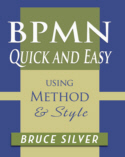
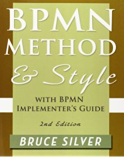
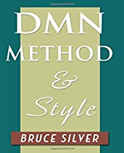
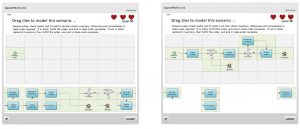
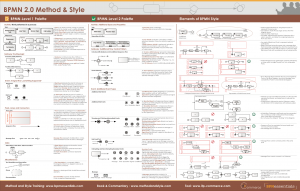

Leave A Comment
You must be logged in to post a comment.